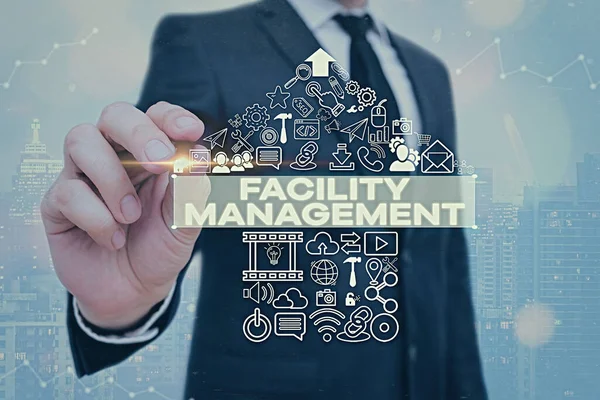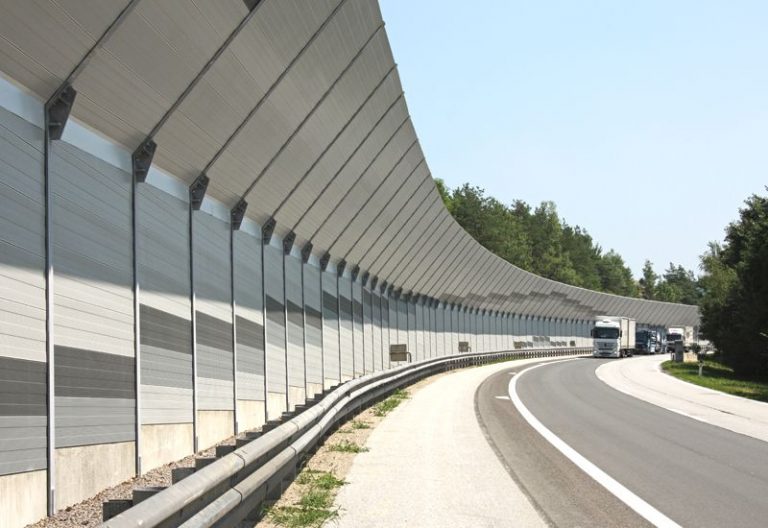Sustainability in facilities management: simple steps to get started
Sustainability has become a buzzword in almost every industry, and facilities management (fm) is no exception. As businesses increasingly recognize their responsibility to reduce environmental impact, facilities managers are at the forefront of this movement. However, getting started with sustainability initiatives can be daunting, especially when faced with budget constraints, regulatory requirements, and the sheer scope of potential changes. This blog post will outline simple, effective steps that facilities managers can take to begin their sustainability journey, highlighting strategies that are often overlooked but essential for making a meaningful impact.
1. Conduct a sustainability audit
Why it matters:
Before implementing any sustainability initiatives, it’s crucial to understand your starting point. A sustainability audit provides a comprehensive overview of your facility’s current environmental impact, including energy use, waste generation, water consumption, and carbon footprint.
Key steps:
Energy use assessment: start by analyzing your facility’s energy consumption. Identify the biggest energy users—such as hvac systems, lighting, and equipment—and assess their efficiency. According to the u.S. Department of energy, commercial buildings waste up to 30% of the energy they consume due to inefficiencies.
Waste management review: evaluate your waste management practices, including the types of waste generated, current recycling rates, and disposal methods. A study by the environmental protection agency (epa) found that improving recycling and composting programs can reduce waste by up to 75%.
Water usage analysis: examine your facility’s water consumption patterns, including irrigation, restroom use, and cooling systems. Identifying areas where water is wasted can help you implement conservation measures.
Carbon footprint calculation: use available tools or partner with a sustainability consultant to calculate your facility’s carbon footprint. This will give you a baseline against which you can measure future improvements.
Overlooked consideration: many audits focus on direct energy use but neglect indirect factors such as the environmental impact of procurement practices, supply chain logistics, and the lifecycle of materials and equipment used in the facility. Expanding the scope of your audit to include these factors can provide a more accurate picture of your facility’s overall environmental impact.
2. Set clear, achievable goals
Why it matters:
Setting clear, measurable sustainability goals provides direction and motivation for your sustainability initiatives. These goals should be ambitious yet achievable, with a focus on both short-term wins and long-term improvements.
Key steps:
Smart goals: use the smart criteria (specific, measurable, achievable, relevant, time-bound) to set your sustainability goals. For example, a smart goal might be: “reduce energy consumption by 15% within the next 12 months by upgrading lighting systems and optimizing hvac operations.”
Short-term wins: identify quick wins that can be achieved with minimal investment, such as switching to led lighting, implementing a recycling program, or installing low-flow water fixtures. These initiatives can build momentum and demonstrate the value of sustainability efforts to stakeholders.
Long-term objectives: in addition to short-term goals, set longer-term objectives such as achieving net-zero energy consumption, reducing water use by 50%, or achieving leed certification for your facility. These goals may require more significant investments and planning but can lead to substantial environmental and financial benefits over time.
Overlooked consideration: when setting goals, consider not only environmental impact but also social and economic sustainability. This might include goals related to improving indoor air quality for occupant health, promoting local procurement to support the community, or implementing fair labor practices within your supply chain.
3. Optimize energy efficiency
Why it matters:
Energy consumption is one of the largest contributors to a facility’s carbon footprint and operational costs. Improving energy efficiency is often the most cost-effective and impactful way to enhance sustainability in facilities management.
Key steps:
Lighting upgrades: replace incandescent and fluorescent lighting with led bulbs, which use up to 75% less energy and last 25 times longer, according to the u.S. Department of energy. Installing motion sensors and dimmers can further reduce energy consumption by ensuring lights are only on when needed.
Hvac optimization: regularly maintain and optimize your hvac systems to improve efficiency. This includes cleaning filters, sealing ducts, and using programmable thermostats. According to energy star, optimizing hvac systems can reduce energy costs by 20-30%.

Building envelope improvements: insulate walls, roofs, and windows to reduce heat loss in winter and heat gain in summer. This reduces the demand on your hvac system and lowers energy consumption.
Renewable energy: consider investing in renewable energy sources such as solar panels, wind turbines, or geothermal systems. While the initial investment may be high, the long-term savings and environmental benefits are substantial. The international renewable energy agency (irena) reports that the cost of solar pv electricity has fallen by 82% since 2010, making it increasingly viable for commercial facilities.
Overlooked consideration: don’t forget about the energy consumption of office equipment and appliances, such as computers, printers, and refrigerators. Encourage staff to turn off equipment when not in use, and consider investing in energy-efficient models with the energy star label.
4. Implement waste reduction and recycling programs
Why it matters:
Reducing waste not only minimizes your facility’s environmental impact but can also lead to cost savings through reduced disposal fees and material reuse.
Key steps:
Source reduction: start by reducing the amount of waste generated in the first place. This might involve implementing digital workflows to reduce paper use, choosing products with minimal packaging, or encouraging suppliers to use reusable or recyclable materials.
Recycling programs: set up or enhance recycling programs for paper, plastics, metals, and e-waste. Ensure that recycling bins are conveniently located and clearly labeled to encourage participation. According to the epa, businesses that implement robust recycling programs can reduce waste by 50-75%.
Composting: if your facility generates organic waste, such as food scraps or landscaping debris, consider implementing a composting program. Composting can reduce the amount of waste sent to landfills and produce valuable compost for landscaping or donation to community gardens.
Circular economy practices: explore opportunities to implement circular economy practices, such as refurbishing or repurposing old equipment, donating surplus materials, or purchasing products made from recycled content.
Overlooked consideration: many facilities overlook the potential for waste reduction in areas such as construction and renovation projects. Implementing a construction waste management plan that prioritizes material reuse, recycling, and environmentally friendly materials can significantly reduce the environmental impact of building projects.
5. Conserve water and manage resources
Why it matters:
Water is a precious resource, and conserving it is a key component of any sustainability strategy. Reducing water consumption not only protects this vital resource but can also lower utility costs and reduce the environmental impact of your facility.
Key steps:
Low-flow fixtures: install low-flow faucets, toilets, and showerheads to reduce water consumption without sacrificing performance. The epa’s watersense program reports that installing water-efficient fixtures can reduce water use by 20-30%.
Smart irrigation systems: for facilities with landscaping, invest in smart irrigation systems that adjust watering schedules based on weather conditions, soil moisture, and plant needs. This can reduce outdoor water use by up to 50%, according to the epa.
Leak detection: regularly inspect plumbing systems for leaks and repair them promptly. Even small leaks can waste significant amounts of water over time.
Greywater recycling: consider implementing greywater recycling systems that reuse water from sinks, showers, and washing machines for purposes such as irrigation or toilet flushing. This can significantly reduce water consumption and is particularly beneficial in areas facing water scarcity.
Overlooked consideration: don’t forget about the potential for water conservation in cooling systems, which are often significant water users in commercial facilities. Implementing practices such as water treatment, recycling, and the use of alternative cooling methods can reduce water consumption and improve efficiency.
6. Engage occupants and stakeholders
Why it matters:
Sustainability is a collective effort that requires the engagement and participation of everyone who uses the facility, including employees, tenants, and visitors. By fostering a culture of sustainability, you can amplify the impact of your initiatives and ensure long-term success.
Key steps:
Awareness campaigns: launch awareness campaigns to educate occupants about your facility’s sustainability goals and how they can contribute. This might include workshops, newsletters, posters, or digital displays that highlight key initiatives and their benefits.
Incentive programs: consider implementing incentive programs that reward occupants for sustainable behaviors, such as reducing energy use, recycling, or participating in carpooling or public transportation initiatives.
Feedback mechanisms: provide channels for occupants to offer feedback and suggestions on sustainability efforts. This not only fosters engagement but can also lead to valuable insights and ideas for further improvement.
Collaborative initiatives: engage stakeholders such as suppliers, contractors, and community organizations in your sustainability efforts. For example, work with suppliers to reduce packaging waste, or partner with local environmental groups to promote conservation initiatives.
Overlooked consideration: engaging senior leadership is crucial for driving sustainability efforts throughout the organization. Ensure that sustainability is integrated into the company’s broader mission and that executives are committed to providing the necessary resources and support.
7. Leverage technology and data analytics
Why it matters:
Technology plays a critical role in modern facilities management, enabling more efficient resource use, better decision-making, and improved sustainability outcomes. By leveraging technology and data analytics, facilities managers can optimize operations, track progress, and identify opportunities for improvement.
Key steps:
Building management systems (bms): implement or upgrade bms to monitor and control building systems such as hvac, lighting, and security. A well-integrated bms can optimize energy use, improve comfort, and reduce waste. According to mckinsey & company, smart buildings can reduce energy consumption by up to 20%.
Iot sensors: deploy iot sensors to collect real-time data on various environmental factors, such as temperature, humidity, co2 levels, and occupancy. This data can be used to fine-tune building operations, improve air quality, and reduce energy use.
Data analytics: use data analytics to analyze trends, identify inefficiencies, and measure the impact of sustainability initiatives. This can help you make data-driven decisions, set realistic targets, and continuously improve your sustainability performance.
Sustainability reporting tools: invest in sustainability reporting tools that allow you to track and report on key metrics, such as energy use, water consumption, waste generation, and carbon emissions. This not only helps you measure progress but also demonstrates your commitment to sustainability to stakeholders.
Overlooked consideration: while technology is a powerful tool, it’s important to ensure that your team has the skills and training needed to use it effectively. Investing in training and professional development can help your team stay up-to-date with the latest tools and best practices in sustainable facilities management.
Conclusion: taking the first steps toward sustainable facilities management
Sustainability in facilities management is not just about compliance or cost savings—it’s about creating a healthier, more resilient, and more responsible built environment. By starting with simple, actionable steps such as conducting a sustainability audit, setting clear goals, optimizing energy and water use, and engaging occupants, facilities managers can make a significant impact on their facility’s environmental footprint.
As you embark on your sustainability journey, remember that it’s a continuous process of learning, improving, and adapting. By staying informed about emerging trends and technologies, and by fostering a culture of sustainability within your organization, you can ensure that your facility remains at the forefront of environmental stewardship.




